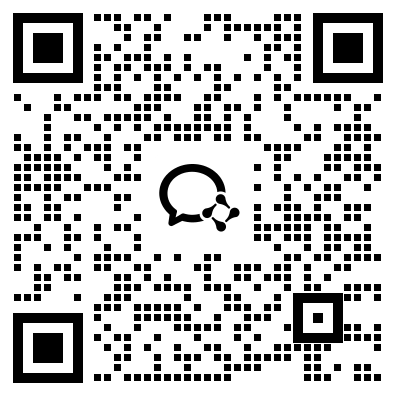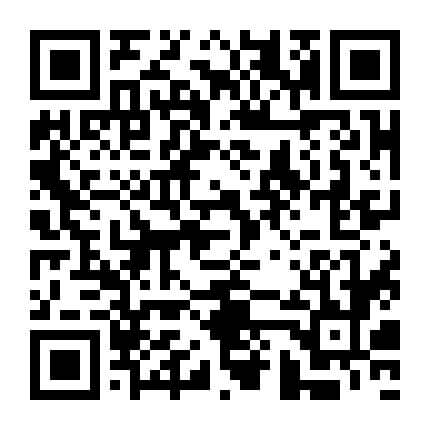考研201英语(一)在线题库每日一练(三百四十一)
摘要:以下是希赛网给大家分享考研201英语(一)在线题库每日一练,希望通过刷题可以帮助大家巩固重要知识点,对知识点查漏补缺,祝愿大家能顺利通过考试!
本文提供考研201英语(一)在线题库每日一练,以下为具体内容
1、In his book The Tipping Point, Malcolm Gladwell argues that “social epidemics” are driven in large part by the actions of a tiny minority of special individuals, often called influentials, who are unusually informed, persuasive, or well connected. The idea is intuitively compelling, but it doesn't explain how ideas actually spread.The supposed importance of influentials derives from a plausible-sounding but largely untested theory called the “two-step flow of communication”: Information flows from the media to the influentials and from them to everyone else. Marketers have embraced the two-step flow because it suggests that if they can just find and influence the influentials, those selected people will do most of the work for them. The theory also seems to explain the sudden and unexpected popularity of certain looks, brands, or neighborhoods. In many such cases, a cursory search for causes finds that some small group of people was wearing, promoting, or developing whatever it is before anyone else paid attention. Anecdotal evidence of this kind fits nicely with the idea that only certain special people can drive trends. In their recent work, however, some researchers have come up with the finding that influentials have far less impact on social epidemics than is generally supposed. In fact, they don't seem to be required at all.The researchers' argument stems from a simple observation about social influence: with the exception of a few celebrities like Oprah Winfrey—whose outsize presence is primarily a function of media, not interpersonal, influence—even the most influential members of a population simply don't interact with that many others. Yet it is precisely these non-celebrity influentials who, according to the two-step-flow theory, are supposed to drive social epidemics, by influencing their friends and colleagues directly. For a social epidemic to occur, however, each person so affected, must then influence his or her own acquaintances, who must in turn influence theirs, and so on; and just how many others pay attention to each of these people has little to do with the initial influential. If people in the network just two degrees removed from the initial influential prove resistant, for example, the cascade of change won't propagate very far or affect many people.Building on the basic truth about interpersonal influence, the researchers studied the dynamics of social influence by conducting thousands of computer simulations of populations, manipulating a number of variables relating to people's ability to influence others and their tendency to be influenced. They found that the principal requirement for what is called “global cascades” — the widespread propagation of influence through networks—is the presence not of a few influentials but, rather, of a critical mass of easily influenced people. 1.By citing the book The Tipping Point, the author intends to( ).2.The author suggests that the "two-step-flow theory" ( ). 3.What the researchers have observed recently shows that ( ). 4.The underlined phrase “these people” in paragraph 4 refers to the ones who ( ). 5.What is the essential element in the dynamics of social influence?
问题1
A、analyze the consequences of social epidemics
B、discuss influentials' function in spreading ideas
C、exemplify people's intuitive response to social epidemics
D、describe the essential characteristics of influentials
问题2
A、serves as a solution to marketing problems
B、has helped explain certain prevalent trends
C、has won support from influentials
D、requires solid evidence for its validity
问题3
A、the power of influence goes with social interactions
B、interpersonal links can be enhanced through the media
C、influentials have more channels to reach the public
D、most celebrities enjoy wide media attention
问题4
A、stay outside the network of social influence
B、have little contact with the source of influence
C、are influenced and then influence others
D、are influenced by the initial influential
问题5
A、The eagerness to be accepted.
B、The impulse to influence others.
C、The readiness to be influenced.
D、The inclination to rely on others.
2、Ancient Greek philosopher Aristotle viewed laughter as “a bodily exercise precious to health.” But(1)some claims to the contrary, laughing probably has little influence on physical fitness. Laughter does (2)short-term changes in the function of the heart and its blood vessels, (3) heart rate and oxygen consumption. But because hard laughter is difficult to (4), a good laugh is unlikely to have (5) benefits the way, say, walking or jogging does. (6), instead of straining muscles to build them, as exercise does, laughter apparently accomplishes the (7), studies dating back to the 1930's indicate that laughter (8) muscles, decreasing muscle tone for up to 45 minutes after the laugh dies down. Such bodily reaction might conceivably help (9) the effects of psychological stress. Anyway, the act of laughing probably does produce other types of (10) feedback, that improve an individual's emotional state. (11) one classical theory of emotion, our feelings are partially rooted (12) physical reactions. It was argued at the end of the 19th century that humans do not cry (13) they are sad but they become sad when the tears begin to flow. Although sadness also (14) tears, evidence suggests that emotions can flow (15) muscular responses. In an experiment published in 1988, social psychologist Fritz Strack of the University of Würzburg in Germany asked volunteers to (16) a pen either with their teeth—thereby creating an artificial smile—or with their lips, which would produce a(n)(17) expression. Those forced to exercise their smiling muscles(18) more enthusiastically to funny cartoons than did those whose months were contracted in a frown,(19) that expressions may influence emotions rather than just the other way around. (20), the physical act of laughter could improve mood.
问题1
A、among
B、except
C、despite
D、like
问题2
A、reflect
B、demand
C、indicate
D、produce
问题3
A、stabilizing
B、boosting
C、impairing
D、determining
问题4
A、transmit
B、sustain
C、evaluate
D、observe
问题5
A、measurable
B、manageable
C、affordable
D、renewable
问题6
A、In turn
B、In fact
C、In addition
D、In brief
问题7
A、opposite
B、impossible
C、average
D、expected
问题8
A、hardens
B、weakens
C、tightens
D、relaxes
问题9
A、aggravate
B、generate
C、moderate
D、enhance
问题10
A、physical
B、mental
C、subconscious
D、internal
问题11
A、Except for
B、According to
C、Due to
D、As for
问题12
A、with
B、on
C、in
D、at
问题13
A、unless
B、until
C、if
D、because
问题14
A、exhausts
B、follows
C、precedes
D、suppresses
问题15
A、into
B、from
C、towards
D、beyond
问题16
A、fetch
B、bite
C、pick
D、hold
问题17
A、disappointed
B、excited
C、joyful
D、indifferent
问题18
A、adapted
B、catered
C、turned
D、reacted
问题19
A、suggesting
B、requiring
C、mentioning
D、supposing
问题20
A、Eventually
B、Consequently
C、Similarly
D、Conversely
3、The ethical judgments of the Supreme Court justices have become an important issue recently. The court cannot(1)its legitimacy as guardian of the rule of law(2)justices behave like politicians. Yet, in several instances, justices acted in ways that(3) the court's reputation for being independent and impartial. Justice Antonin Scalia, for example, appeared at political events. That kind of activity makes it less likely that the court's decisions will be(4)as impartial judgments. Part of the problem is that the justices are not(5) by an ethics code. At the very least, the court should make itself (6) to the code of conduct that (7) to the rest of the federal judiciary. This and other similar cases (8) the question of whether there is still a (9) between the court and politics. The framers of the Constitution envisioned law (10) having authority apart from politics. They gave justices permanent positions (11) they would be free to (12 )those in power and have no need to (13)political support. Our legal system was designed to set law apart from politics precisely because they are so closely (14) . Constitutional law is political because it results from choices rooted in fundamental social (15) like liberty and property. When the court deals with social policy decisions, the law it (16)is inescapably political—which is why decisions split along ideological lines are so easily (17) as unjust. The justices must (18) doubts about the court's legitimacy by making themselves (19) to the code of conduct. That would make rulings more likely to be seen as separate from politics and, (20), convincing as law.
问题1
A、emphasize
B、maintain
C、modify
D、recognize
问题2
A、when
B、lest
C、before
D、unless
问题3
A、restored
B、weakened
C、established
D、eliminated
问题4
A、challenged
B、compromised
C、suspected
D、accepted
问题5
A、advanced
B、caught
C、bound
D、founded
问题6
A、resistant
B、subject
C、immune
D、prone
问题7
A、resorts
B、sticks
C、loads
D、applies
问题8
A、evade
B、raise
C、deny
D、settle
问题9
A、line
B、barrier
C、similarity
D、conflict
问题10
A、by
B、as
C、though
D、towards
问题11
A、so
B、since
C、provided
D、though
问题12
A、serve
B、satisfy
C、upset
D、replace
问题13
A、confirm
B、express
C、cultivate
D、offer
问题14
A、guarded
B、followed
C、studied
D、tied
问题15
A、concepts
B、theories
C、divisions
D、conventions
问题16
A、excludes
B、questions
C、shapes
D、controls
问题17
A、dismissed
B、released
C、ranked
D、distorted
问题18
A、suppress
B、exploit
C、address
D、ignore
问题19
A、accessible
B、amiable
C、agreeable
D、accountable
问题20
A、by all means
B、at all costs
C、in a word
D、as a result
4、People are, on the whole, poor at considering background information when making individual decisions. At first glance this might seem like a strength that (1) the ability to make judgments which are unbiased by (2) factors. But Dr. Uri Simonsohn speculated that an inability to consider the big (3) was leading decision-makers to be biased by the daily samples of information they were working with. (4), he theorised that a judge (5) of appearing too soft (6) crime might be more likely to send someone to prison (7) he had already sentenced five or six other defendants only to forced community service on that day.To (8) this idea, he turned to the university-admissions process. In theory, the (9) of an applicant should not depend on the few others (10) randomly for interview during the same day, but Dr Simonsohn suspected the truth was (11).He studied the results of 9,323 MBA interviews (12) by 31 admissions officers. The interviewers had (13) applicants on a scale of one to five. This scale (14) numerous factors into consideration. The scores were (15) used in conjunction with an applicant’s score on the Graduate Management Admission Test, or GMAT, a standardised exam which is (16) out of 800 points, to make a decision on whether to accept him or her.Dr Simonsonh found if the score of the previous candidate in a daily series of interviewees was 0.75 points or more higher than that of the one (17) that, then the score for the next applicant would (18) by an average of 0.075 points. This might sound small, but to (19) the effects of such a decrease a candidate would need 30 more GMAT points than would otherwise have been (20).
问题1
A、grants
B、submits
C、transmits
D、delivers
问题2
A、minor
B、objective
C、crucial
D、external
问题3
A、issue
B、vision
C、picture
D、moment
问题4
A、For example
B、On average
C、In principle
D、Above all
问题5
A、fond
B、fearful
C、capable
D、thoughtless
问题6
A、in
B、on
C、to
D、for
问题7
A、if
B、until
C、though
D、unless
问题8
A、promote
B、emphasize
C、share
D、test
问题9
A、decision
B、quality
C、status
D、success
问题10
A、chosen
B、studied
C、found
D、identified
问题11
A、exceptional
B、defensible
C、replaceable
D、otherwise
问题12
A、inspired
B、expressed
C、conducted
D、secured
问题13
A、assigned
B、rated
C、matched
D、arranged
问题14
A、put
B、got
C、gave
D、took
问题15
A、instead
B、then
C、ever
D、rather
问题16
A、selected
B、passed
C、marked
D、introduced
问题17
A、before
B、after
C、above
D、below
问题18
A、jump
B、float
C、drop
D、fluctuate
问题19
A、achieve
B、undo
C、maintain
D、disregard
问题20
A、promising
B、possible
C、necessary
D、helpful
5、Up until a few decades ago, our visions of the future were largely — though by no means uniformly — glowingly positive. Science and technology would cure all the ills of humanity, leading to lives of fulfillment and opportunity for all.Now utopia has grown unfashionable, as we have gained a deeper appreciation of the range of threats facing us, from asteroid strike to epidemic flu to climate change. You might even be tempted to assume that humanity has little future to look forward to.But such gloominess is misplaced. The fossil record shows that many species have endured for millions of years — so why shouldn't we? Take a broader look at our species' place in the universe, and it becomes clear that we have an excellent chance of surviving for tens, if not hundreds, of thousands of years. Look up Homo sapiens in the “Red List” of threatened species of the International Union for the Conversation of Nature (IUCN), and you will read: “Listed as Least Concern as the species is very widely distributed, adaptable, currently increasing, and there are no major threats resulting in an overall population decline.”So what does our deep future hold? A growing number of researchers and organisations are now thinking seriously about that question. For example, the Long Now Foundation has as its flagship project a mechanical clock that is designed to still be marking time thousands of years hence.Perhaps willfully, it may be easier to think about such lengthy timescales than about the more immediate future. The potential evolution of today's technology, and its social consequences, is dazzlingly complicated, and it's perhaps best left to science fiction writers and futurologists to explore the many possibilities we can envisage. That's one reason why we have launched Arc, a new publication dedicated to the near future.But take a longer view and there is a surprising amount that we can say with considerable assurance. As so often, the past holds the key to the future: we have now identified enough of the long-term patterns shaping the history of the planet, and our species, to make evidence-based forecasts about the situations in which our descendants will find themselves.This long perspective makes the pessimistic view of our prospects seem more likely to be a passing fad. To be sure, the future is not all rosy. But we are now knowledgeable enough to reduce many of the risks that threatened the existence of earlier humans, and to improve the lot of those to come.1.Our vision of the future used to be inspired by( ).2.The IUCN's “Red List” suggests that human beings are ( ). 3.Which of the following is true according to Paragraph 5?4.To ensure the future of mankind, it is crucial to ( ). 5.Which of the following would be the best title for the text?
问题1
A、our desire for lives of fulfillment
B、our faith in science and technology
C、our awareness of potential risks
D、our belief in equal opportunity
问题2
A、a sustained species
B、a threat to the environment
C、the world's dominant power
D、a misplaced race
问题3
A、Arc helps limit the scope of futurological studies.
B、Technology offers solutions to social problem.
C、The interest in science fiction is on the rise.
D、Our immediate future is hard to conceive.
问题4
A、explore our planet's abundant resources
B、adopt an optimistic view of the world
C、draw on our experience from the past
D、curb our ambition to reshape history
问题5
A、Uncertainty about Our Future
B、Evolution of the Human Species
C、The Ever-bright Prospects of Mankind
D、Science, Technology and Humanity
点击查看【完整】试卷>>延伸阅读
- 历年考研国家分数线汇总(更新至2025年)
- 2025考研国家分数线正式发布
- 2025全国各省考研初试成绩公布时间汇总(更新中)
- 2025年考研成绩公布时间及查询流程
- 2025年全国硕士研究生招生考试(初试)温馨提示汇总
- 2025年全国硕士研究生招生考试考场规则

考研微信公众号

考研备考资料免费领取
去领取
- 1
- 1
- 7
 专注在线职业教育24年
专注在线职业教育24年









 扫描二维码
扫描二维码
 扫描二维码
扫描二维码








